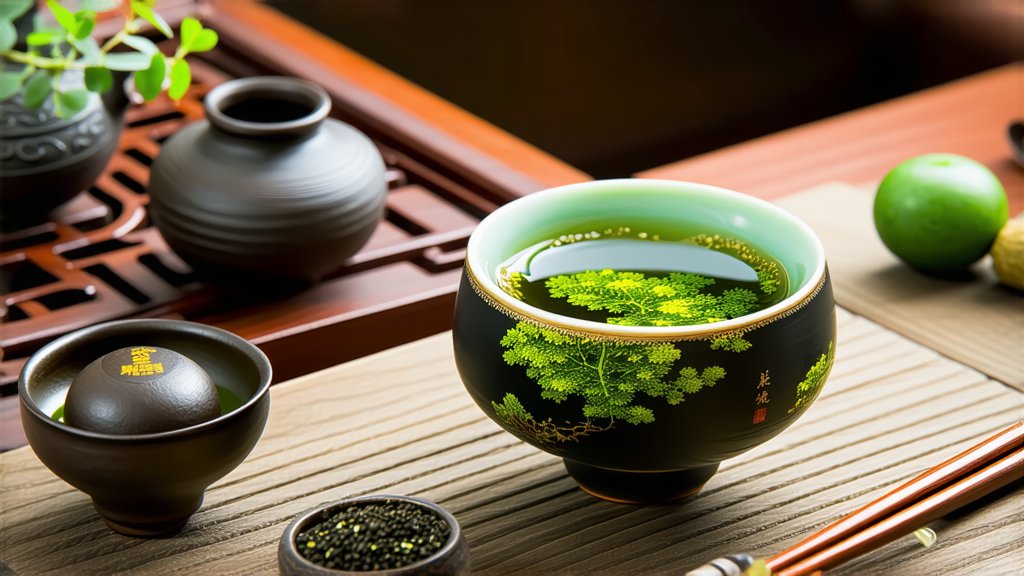
In the vast and diverse world of Chinese tea, few varieties capture the essence of artistry and tradition as profoundly as Tieguanyin, a prestigious member of the Oolong tea family. This exquisite tea, often referred to as the "Iron Goddess of Mercy" or "Iron Buddha," hails from the mountainous region of Anxi County in Fujian Province, China. Its name, translating to "Iron Guanyin," pays homage both to the resilient nature of the tea plant and the revered Bodhisattva of Compassion, Guanyin, symbolizing the harmonious balance between strength and grace embodied in this beverage.
A Glimpse into History
The origins of Tieguanyin can be traced back to the early Qing Dynasty (1644-1912), though its legend is steeped in mystery and folklore. One popular tale recounts how a poor scholar discovered the unique tea bushes while seeking refuge in a remote temple during a thunderstorm. He propagated the plants, and thus began the cultivation of what would become Tieguanyin. Over centuries, it evolved from a local specialty to an internationally acclaimed tea, cherished for its exceptional quality and distinctive character.
Varieties and Cultivation
Tieguanyin's allure lies not only in its rich history but also in the meticulous care taken during its cultivation. Grown primarily in the high-altitude regions of Anxi, these tea plants thrive in a cool, misty climate that imparts their leaves with a unique flavor profile. There are several sub-varieties of Tieguanyin, each with subtle differences in taste and aroma, influenced by factors such as altitude, soil composition, and the specific clone of Camellia sinensis used. Among them, 'Xiang' (fragrant) and 'Dancong' (single bush) are notable for their distinct fragrances and flavors.
The Art of Crafting Tieguanyin
The production of Tieguanyin is a testament to the artisanal skill passed down through generations. It involves a series of intricate steps: withering, fixation (also known as killing green), rolling, oxidation, drying, and roasting. Unlike other oolongs, Tieguanyin undergoes multiple rounds of rolling and partial oxidation, which contribute to its tightly rolled pellet shape and complex flavor profile. The final product reveals a delicate balance between the freshness of green tea and the depth of black tea, encapsulated within each tiny pellet.
The Symphony of Flavors
Upon brewing, Tieguanyin unleashes a symphony of aromas and flavors that dance upon the palate. Its infusion boasts a captivating bouquet of floral notes, often reminiscent of orchids or magnolias, intertwined with hints of fruitiness and a whisper of roasted nuttiness. The initial sip offers a smooth, creamy texture followed by a lingering sweet aftertaste that invites contemplation and relaxation. Each subsequent infusion reveals new layers of complexity, making it a tea best savored slowly over time.
Gongfu Brewing: A Ritualistic Experience
To truly appreciate Tieguanyin, one must engage in the traditional Gongfu brewing method, a ritualistic practice that emphasizes precision, patience, and mindfulness. Using a small Yixing clay teapot or Gaiwan, start with a quick rinse of the leaves to awaken their dormant flavors. Then, follow with short steepings (around 15-30 seconds) at near-boiling temperatures, gradually increasing the duration for subsequent infusions. This approach coaxes out the full spectrum of Tieguanyin's characteristics, transforming each session into a meditative journey for both the brewer and drinker.
Pairing and Preservation
Tieguanyin pairs beautifully with light snacks like nuts, pastries, or dim sum, enhancing the tasting experience without overpowering the tea's delicate flavors. To preserve its freshness and prolong shelf life, store Tieguanyin in an airtight container away from light, moisture, and strong odors. Refrigeration can also help maintain its optimal condition.
In conclusion, Tieguanyin stands as a shining example of China's tea-making mastery, offering not just a drink but an immersive cultural experience. Its history, craftsmanship, and the art of its preparation reflect the profound connection between nature, humanity, and the pursuit of harmony—a philosophy deeply rooted in Chinese culture. For those fortunate enough to partake, Tieguanyin is more than a tea; it is a voyage into the soul of Chinese tea heritage, inviting all who encounter it to pause, reflect, and savor life's simple yet profound pleasures.